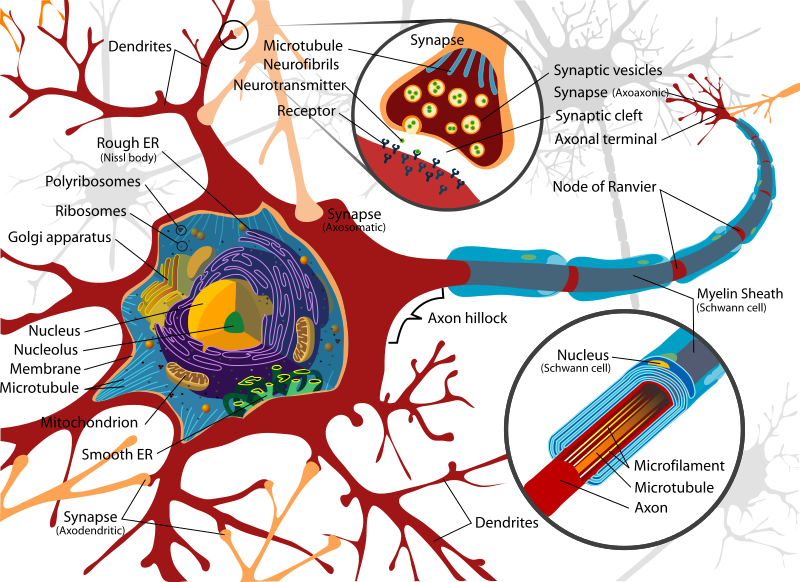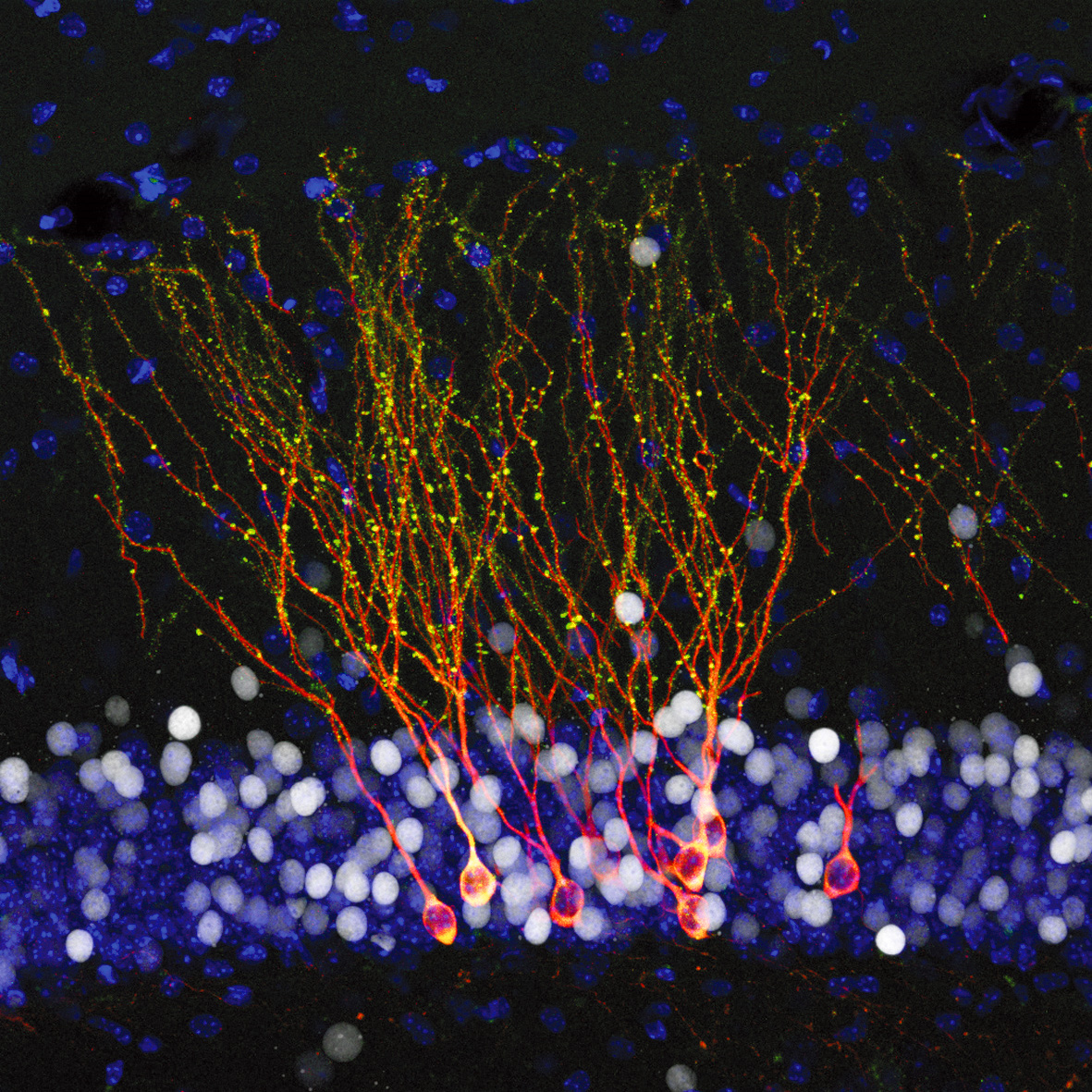By Jean-Jacques DeLisle, contributing writer
Brain-computer and brain-electronics interfaces are common fare in modern science fiction and adventure entertainment, from multi-spectral imaging implants to advanced weapons targeting modules to direct intelligence projection into a digital computer domain. In the real world, however, it is the use of neural interfaces to provide prosthetic replacements or even regenerative neural therapies for disabled war fighters and accident victims that currently interests DARPA and many university research and industry groups. With the work of DARPA's Neural Engineering System Design (NESD) program now starting, these university and industry participants have committed to advancing the technology for vision, hearing, and speech neural interface technology through targeted research and development.

A complete neuron cell diagram. Image source: Wikimedia.
Neural interfaces have long been a subject of study in government research. “DARPA has been a pioneer in brain-machine interface technology since the 1970s, but we began investing heavily in the early 2000s when the confluence of improved sensing and information technology opened the door to new capabilities,” said director of DARPA’s biological technologies office, Justin Sanchez. “Since then, DARPA has invested hundreds of millions of dollars transitioning ‘neuroscience’ into ‘neurotechnology’ with a series of cumulatively more advanced research programs that expand the frontiers of what is possible in this enormously difficult domain.”

The NESD program aims to create a brain-machine neural interface of 1 million neurons, which is predicted to be enough to simultaneously enable encode and decode of neural data for vision, hearing, and speech. Image source: Wikimedia.
The latest stage in that transition is the NESD program, which began in January 2016 with a call for proposals. Its stated goal: “developing an implantable system capable of providing precision communications between the brain and the digital world.” The successful proposals include many prestigious participants, including:
- Brown University
- Columbia University
- Fondation Voir et Entendre
- John B. Pierce Laboratory
- Paradromics, Inc.
- University of California, Berkeley
The NESD call for proposals involved more than just pie-in-the-sky ideas. The proposals accepted were required to include plans for the development of implantable packages that met specific technical goals of biocompatibility concerns, communications, and power for the system. Moreover, an additional goal of the program is to further the understanding with neuron-level precision of how the human brain processes vision, speech, and hearing simultaneously. This is no small feat as the teams are required to turn this understanding into advanced neuro-computational techniques and mathematical models capable of encoding and decoding neural data of at least 1 million neurons.
“The NESD program looks ahead to a future in which advanced neural devices offer improved fidelity, resolution, and precision sensory interface for therapeutic applications,” said Phillip Alvelda, the founding NESD program manager. “By increasing the capacity of advanced neural interfaces to engage more than 1 million neurons in parallel, NESD aims to enable rich two-way communication with the brain at a scale that will help deepen our understanding of that organ’s underlying biology, complexity, and function.”
Fortunately, the NESD program teams will have help, as DARPA has also arranged an NESD industry group, which is committed to supporting the NESD members with access to design assistance, fabrication services, and rapid prototyping. The goal is for this collaboration to foster the successful transition from research to commercial technology. The NESD Industry Group will operate as subcontractors to the NESD program teams and includes organizations like:
- Allen Institute for Brain Science
- Bionics Institute
- Boston Micromachines Corporation
- Boston Scientific
- Chronocam
- Cirtec
- DragonID
- Freedom Photonics
- IMEC
- Infinite Arthroscopy
- Inscopix
- Nanomedical Diagnostics
- Naval Research Laboratory
- Star Lab
- Qualcomm
With NESD and the U.S. National Institute of Health’s Brain Research through Advancing Innovative Neurotechnologies (BRAIN) initiative, intense effort and government funding are being placed in the hands of neuroscience and neurotechnology development groups. One of the main focuses of both efforts is to also investigate the ethics surrounding neural interfacing in order to prepare the world for a future that may see brain-machine interfacing as common and prolific as smartphones are today.
Advertisement
Learn more about Electronic Products Magazine





